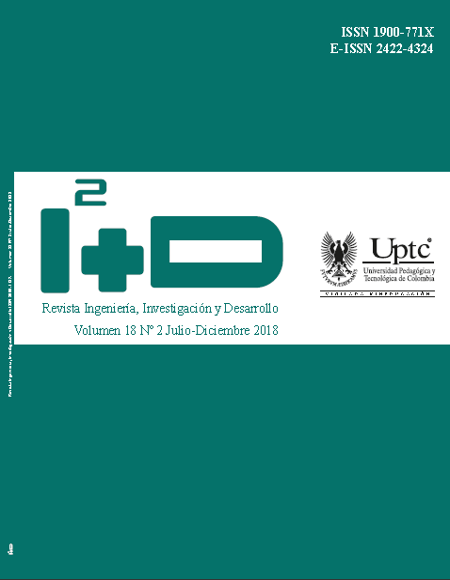A systematic literature review of Intellectual Property Management in Higher Education Institutions.

Abstract
Due to the new challenges faced by the Higher Education Institutions (HEIs) as generators of knowledge, the management of their Intellectual Property (IP) becomes relevant, in order to promote the obtaining of favorable results from the creations that are gestated with their resources and that are expected to be used by industry and society. Therefore, it has been interesting for some researchers to understand the complexity of these management systems. This paper exposes the state of the art of IP management in the Colombian context, supported by HEI cases in the world and Latin America. Among the main findings are: 1) a clear transition from the recognition of the importance of management to the proposal of management models, and 2) the need to deepen the definition of structures that support the complexity and particularity of an IES.
Keywords
Higher Education Institutions, Management Systems, Intellectual Property
Supplementary File(s)
pdf (Español)Author Biography
María Luisa Villalba Morales
Francisco Javier Montoya
References
C. Atehortúa y E. Yepes, «Gestión Estratégica de Propiedad Intelectual para la inserción en redes de la economía del conocimiento,» de Guía estratégica de Propiedad Intelectual Universidad Empresa, Medellín, Vallejo Editores, 2014, pp. 29-47.
J. Payumo, P. Arasu, A. Fauzi, I. Siregar y D. Noviana, «An entrepreneurial, research-based university model focused on intellectual property management for economic development in emergingeconomies: The case of Bogor Agricultural University, Indonesia,» World Patent Information, vol. 36,
p. 22e31, 2014.
C. M. Mejía, La Gestión Universitaria de la Propiedad Intelectual en Colombia, Bogotá: Bonaventuriana, 2015.
G. A. Garcia, «La propiedad intelectual en las economías universitarias,» Revista Facultad de Derecho y Ciencias Políticas, vol. 38, no 108, pp. 53 -72, 2008.
D. González y A. Jaime, «El Patentamiento Universitario en Colombia,» Journal of Technology Management & Innovation, vol. 8 , no Special Issue ALTEC, pp. 233-245, 2013.
N. Cheeptham y P. Chantawannakul, «Intellectual property management and awareness at the university level in
the biotechnology era: a Thai perspective,» World Patent Information, vol. 23, pp. 373-389, 2001.
Universidad Industrial de Santander, «PILA Network: La Red de Propiedad Intelectual e Industrial en Latinoamérica recuento de 3 años de colaboración.,» 2011. [En línea]. Available: http://pila-network.org/sites/default/files/Version_Pdf_del_Libro.pdf. [Último acceso: 14 Enero 2017].
D. González, «La Gestión de la Propiedad Intelectual en las Universidades Colombianas: El caso de la Universidad Industrial de Santander,» Tesis de Grado - Universidad Industrial de Santander, Bucaramanga, 2012.
R. Welsh, L. Glenna, W. Lacy y D. Biscotti, «Close enough but not too far: Assessing the effects of university industry research relationships and the rise of academic capitalism,» Research Policy, no 37, p. 1854–1864, 2008.
K. Luna y J. Solleiro, «La gestión de la propiedad intelectual en Centros de Investigación Mexicanos: El caso del Instituto Mexicano del Petróleo,» Journal of Technology Manag e Innovation, vol. 2, no 2, pp. 157- 169, 2007.
Red PILA, «http://pila-network.org/,» 2017. [En línea]. Available: http://pila-network.org/presentaci%C3%B3n. [Último acceso: 16 febrero 2017].
Red PILA, «http://pila-network.org/publicaciones,» 2017b. [En línea]. Available: http://pila-network.org/publicaciones. [Último acceso: 30 Enero 2017].
G. Sabino y M. Ayuso, «La propiedad intelectual en las universidades brasileñas: Universidad Federal de Goias y Universidad de Brasília,» Biblios, no 47, pp. 82-103, 2012.
K. Pineda, M. E. Morales y M. C. Ortiz, «Modelos y mecanismos de interacción universidad-empresa-Estado: retos para las universidades colombianas,» Equidad & Desarrollo, no 15, pp. 41-67, 2011.
L. Solano, «La Propiedad Intelectual en las Universidades: Nuevos centros de innovación, emprendimiento y transferencia de tecnología; titularidad de derechos y legislación.,» Pontificia Universidad Javeriana, Bogotá, 2012.
Ruta N; Cámara de Comercio de Medellín para Antioquia; Coroporación Tecnnova UEE, Guía Estratégica de Propiedad Intelectual. Universidad Empresa, Medellín : Vallejo Editores, 2014.
L. A. Briceño y E. Morales, «Desafíos de la política pública colombiana frente a la transferencia de resultados de investigación universitaria,» Revista Virtual Via Inveniendi et Iudicandi, vol. 10, no 1, pp. 43-86, 2015.
F. Alvarado-Benavides, « Algunos efectos de la gestión tecnológica en la producción industrial y el papel de la educación para su apropiación en Colombia.,» Ingeniería Investigación Y Desarrollo, vol. 3, no 2, pp. 23-29, 2006
F. Vallejo y D. Álvarez, «Importancia de la propiedad intelectual en la Universidad Católica de Colombia,» Studiositas., vol. 3, no 1, pp. 21-27, 2008.
Red PILA, «Análisis del nivel de concientización y uso de la PI en las IES: Necesidades Formativas. Colombia,» 2009.
D. González y A. Jaime, «El estado de La Propiedad Intelectual en las Universidades Colombianas,» UIS Ingenierías, vol. 10, no 2, pp. 101-112, 2011.
M. E. Morales, R. Sanabria y P. A. Plata, «Determinantes de la transferencia de propiedad industrial al sector productivo en universidades públicas colombianas,» CUADERNOS DE ADMINISTRACIÓN, 2014.
F. Montoya y M. Villalba, «Diagnóstico del Sistema de Gestión de la Propiedad Intelectual Universitaria: Caso Universidad de San Buenaventura,» de 5o Congreso Internacional de Gestión Tecnológica y de la Innovación - COGESTEC, Bucaramanga, 2016.
L. Gaviría y J. D. Londoño, «Importancia de un Modelo de Gestión de Propiedad Intelectual en una Institución De Educación Superior: Caso Instituto Tecnológico Metropolitano,» de 5o Congreso Internacional de Gestión Tecnológica y de la Innovación - COGESTEC, Bucaramanga, 2016.